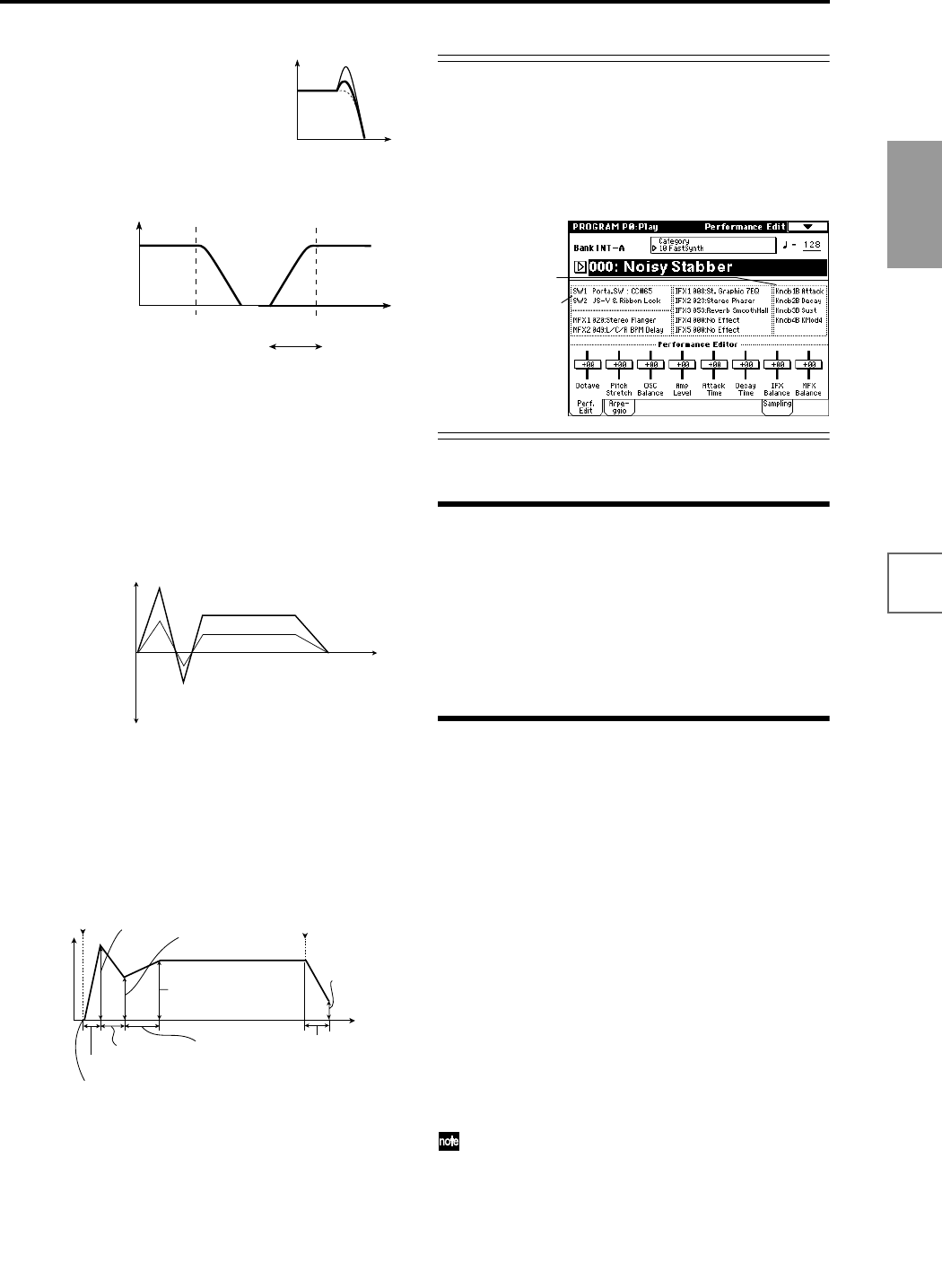
27
Quick Start
Power on/offDemo songPlaying
programs
Playing
combinations
Using
controllers
ArpeggiatorRPPRProgram
editing
Combination
editing
SamplingSong
Adjusting the cutoff frequency of the high-pass filter will
modify the fullness of the sound from which the low fre-
quency range has been filtered out.
Knob [3]: EG-INTENSITY
Adjust the filter EG intensity (the depth at which the filter
EG is applied).
Rotating the knob will affect the depth of the filter EG.
Normally, rotating the knob toward the left will make the
filter EG apply less deeply, and rotating it toward the right
will make the filter EG apply more deeply. Since the filter
EG will operate based on the cutoff frequency of the filter,
knobs [1] and [3] will work together to control the tonal
changes produced by the filter.
Knob [4]: EG-RELEASE
Adjusts the release times of the filter EG and the amp EG.
This will determine the amount of time from note-off until
the sound disappears.
When you adjust the knob, the release times of the filter
EG and the amp EG will change. Normally, rotating the
knob toward the left will shorten the release time, and
rotating it toward the right will lengthen the release time.
B-mode controls
Using these knobs, you can control parameters such as
volume, portamento time, pan or filter and amp EG, pitch
LFO, and master effect send levels etc.
The B-mode function settings are made for each individ-
ual program, combination, or song.
In Sampling mode and Song Play mode, the B-mode func-
tions are set for the entire mode (☞p.145).
Viewing the parameters that are assigned to
[SW1], [SW2] keys, and the REALTIME CONTROLS
B-mode
In Program mode, the B-mode functions of the REAL-
TIME CONTROLS knobs [1], [2], [3], and [4] and [SW1]/
[SW2] keys can be verified in the P0: Play, Performance
Edit page.
[VALUE] slider
When a program number is selected in Program P0: Play
page, or when a combination number is selected in Com-
bination mode page P0: Play page, you can use the
[VALUE] slider as a source for alternate modulation or
effect dynamic modulation, and control program parame-
ters or effect parameters.
Keyboard
Velocity
The force with which you initially strike a note can apply
an effect.
Normally this is used to control volume, or the speed or
sensitivity of the EG.
After Touch
This effect can be applied by varing the pressure on a key
that is already being held down.
Normally this is used to control volume, tone (cutoff fre-
quency), or LFO sensitivity etc.
Note Number
Varing amounts of an effect will be applied depending on
the position of the key on the keyboard.
Normally this is used to control volume, tone (cutoff fre-
quency), LFO sensitivity, and EG sensitivity etc.
This can be used as a source for alternate modulation
or effect dynamic modulation, to control program
parameters or effect parameters.
Level
Cutoff
frequency
LPF HPF
Level
Time
Level
Time
Attack Time
Decay Time
Slope Time
Release Time
Attack Level
Start Level
Sustain Level
Break Level
note-on
note-off
Release Level
Functions assigned to the
[SW1] and [SW2] keys
Functions assigned to
the B-mode knobs [1]–[4]


















